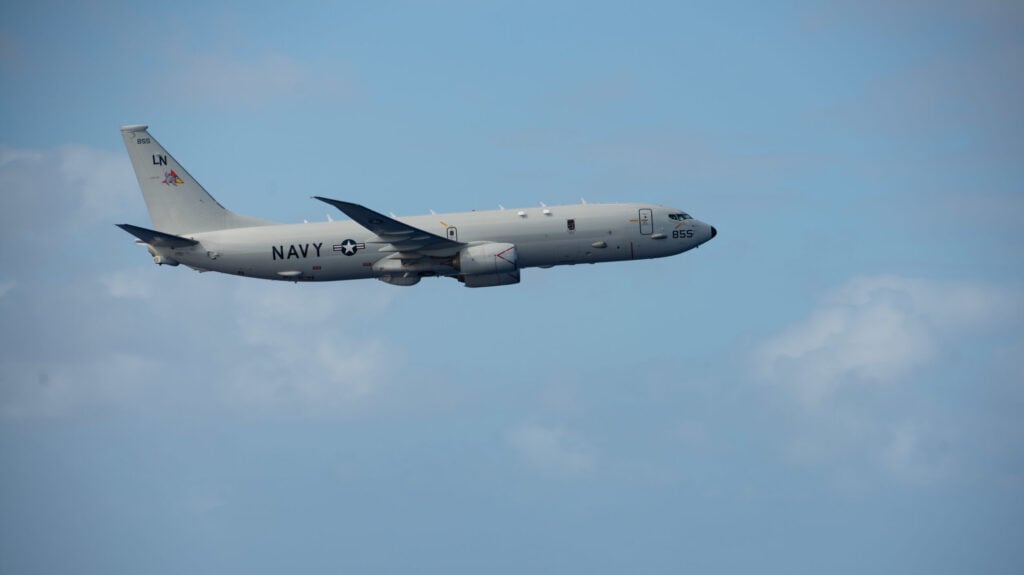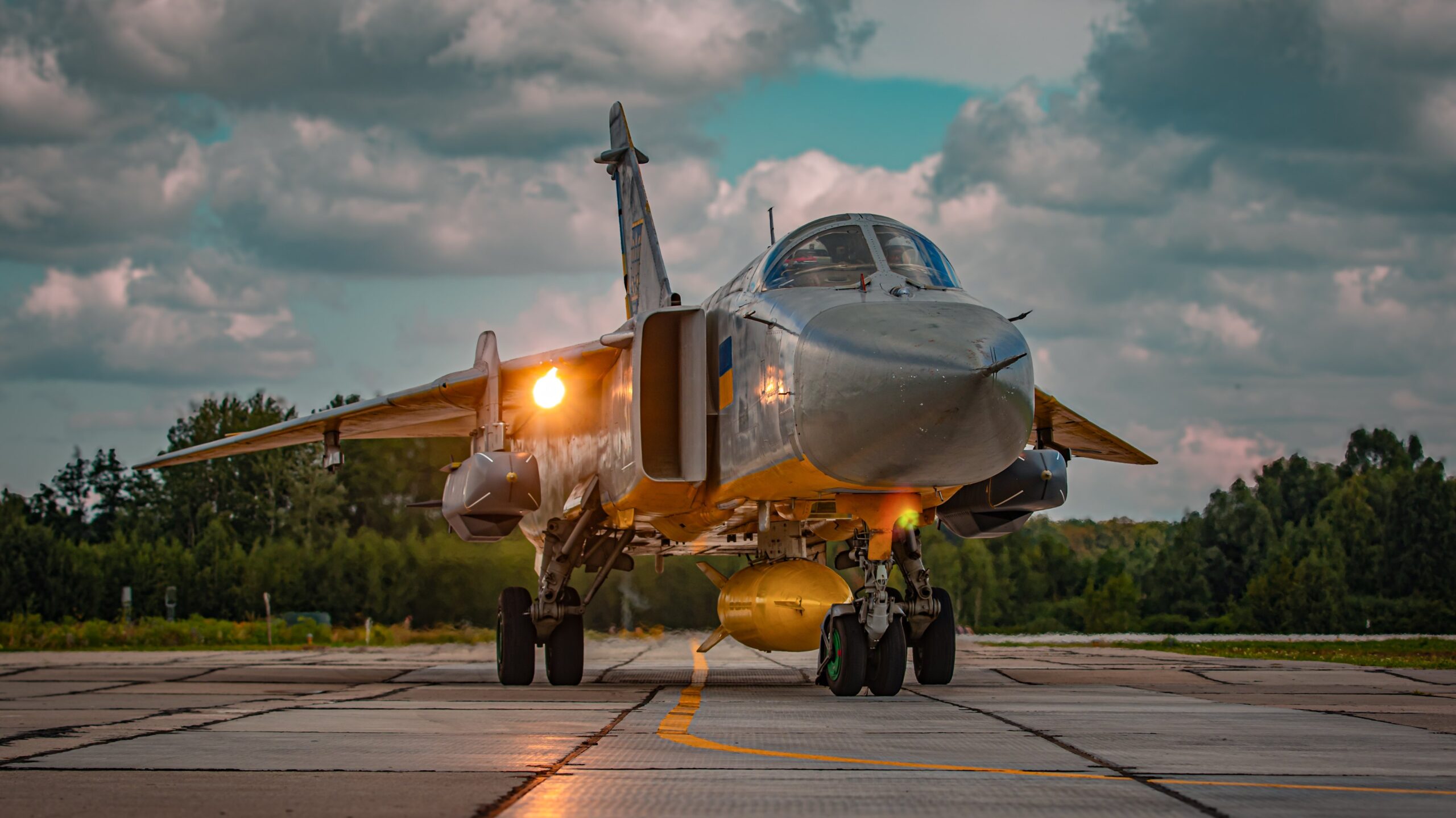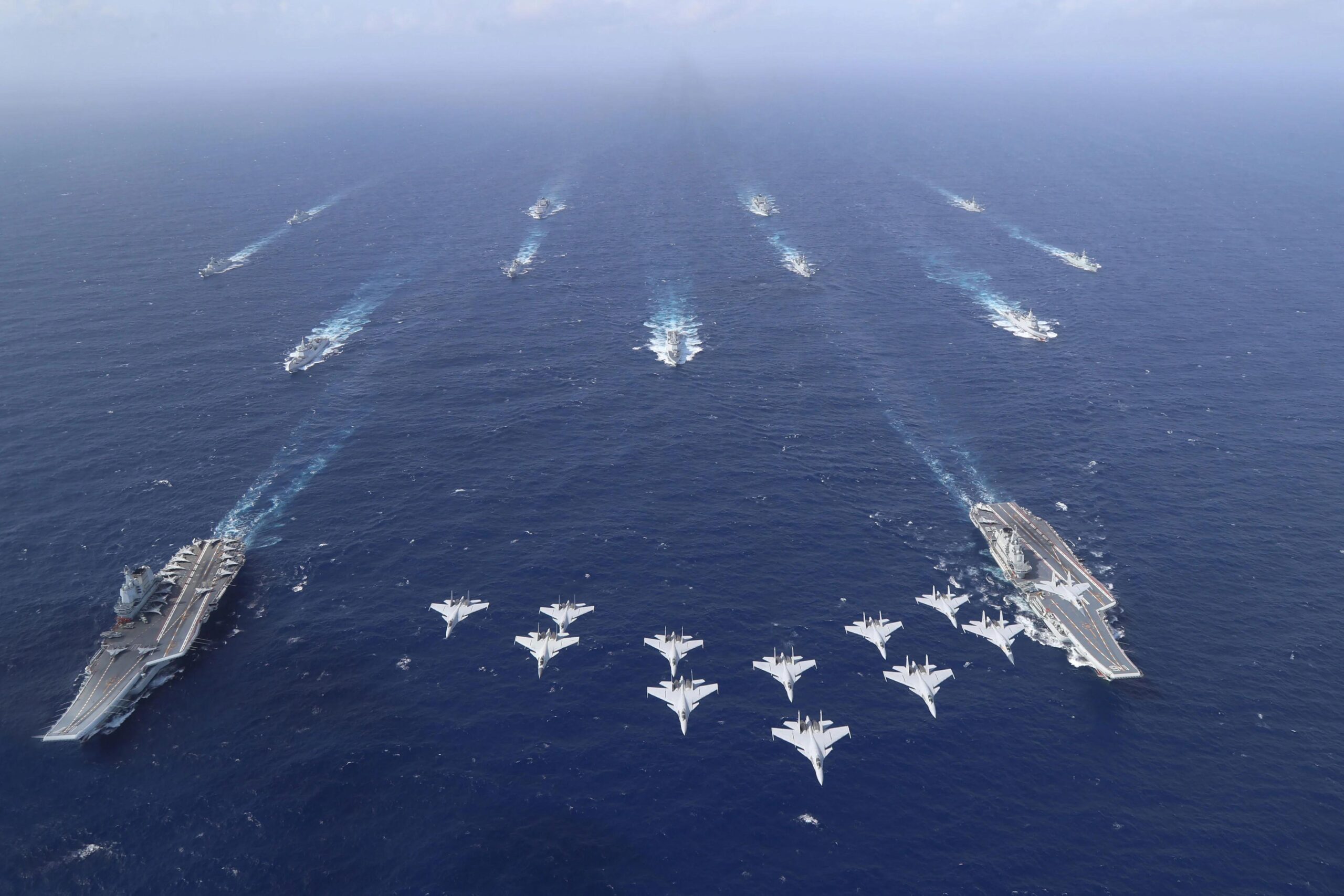A P-8A Poseidon from the “Pelicans” of Patrol Squadron (VP) 45 flies by the aircraft carrier USS Nimitz (Photo by US Navy Mass Communication Specialist 2nd Class Caitlin Flynn)
JACKSONVILLE, Fla. — The Navy’s effort to integrate a long-range, ship-killing missile for the service’s P-8 Poseidon maritime patrol aircraft should finish testing activities this summer, according to a Boeing executive.
“The testing is currently going well. We expect it to be done later this summer if all things continue as planned. And that’ll be yet another capability that the US Navy will have at its disposal,” Jon Spore, Boeing senior business development representative for the P-8, said in a Thursday briefing with reporters during a visit at the company’s facilities in Jacksonville, Fla.
The endeavor would see P-8 manufacturer Boeing integrate the Long Range Anti-Ship Missile (LRASM), which is separately made by Lockheed Martin, onto the aircraft. Fielding the weapon on the Poseidon would expand the Navy’s ability to counter China’s burgeoning naval strength, analysts previously told Breaking Defense.
Spore said the P-8 will be able to carry up to four LRASMs once the testing completes. The missile has a range of over 200 nautical miles, according to Lockheed.
A Navy spokesperson could not immediately answer when asked when the service expected testing would finish. The service has also tapped Lockheed and RTX to develop a follow-on missile to the LRASM dubbed HALO. The hypersonic ship-killer is expected to enter service later this decade.
Alongside the LRASM work, Boeing has also developed with internal funds a multimission pod mounted underneath the Poseidon, which Spore said should enter flight testing next month. “There’s different levels of flight testing, but that could take approximately up to two years,” he said, which will carry features that are “not organic” to the aircraft.
What exactly the pod contains will be dependent on customer desires, Spore said, though he noted some potential systems like radars and other sensors. “We’re working now with customers to identify sensors that they would like us to include. We’re also working with suppliers of sensors [to determine what] they might be able to provide,” he said.
Boeing is further working at the company’s facilities here at Cecil Field, a former Naval base shuttered in the 1990s, to overhaul Navy P-8 planes with a new upgrade known as Increment 3 Block 2. The first aircraft arrived at Boeing’s facilities earlier this year and should be turned around by January, according to Mark Stevens, Boeing’s program manager for the effort. (Like other media, Breaking Defense accepted accommodations from Boeing for the visit.)
“This is probably the first, I would call it the first major mod — structural and heavy electrical mod,” Stevens said, standing in front of the Navy plane where work was underway. The Increment 3 Block 2 effort also covers P-8s flown by Australia, though much of that work will be done indigenously by Boeing’s Australia arm after the first couple of Canberra’s planes are modified in Jacksonville.
The modification effort, Stevens said, will add “a number of antennas” that can detect signals emitted by submarines, improve large-area anti-submarine warfare active search capabilities and incorporate new wideband satellite communications connectivity.





















Discussion about this post